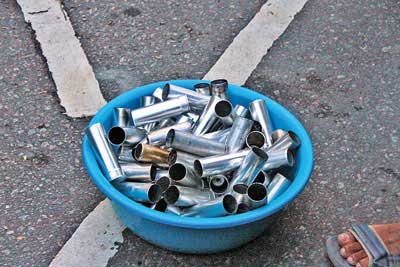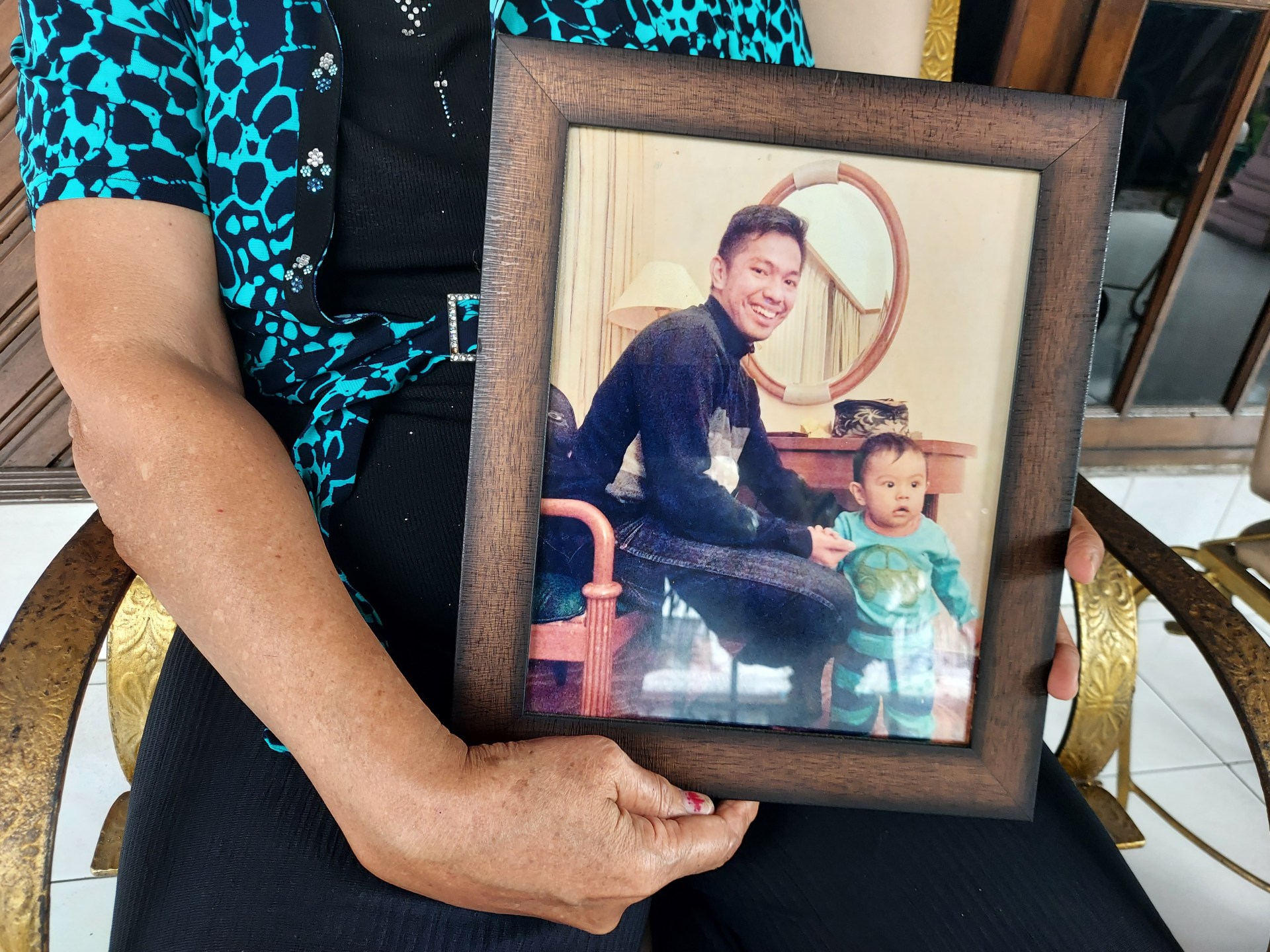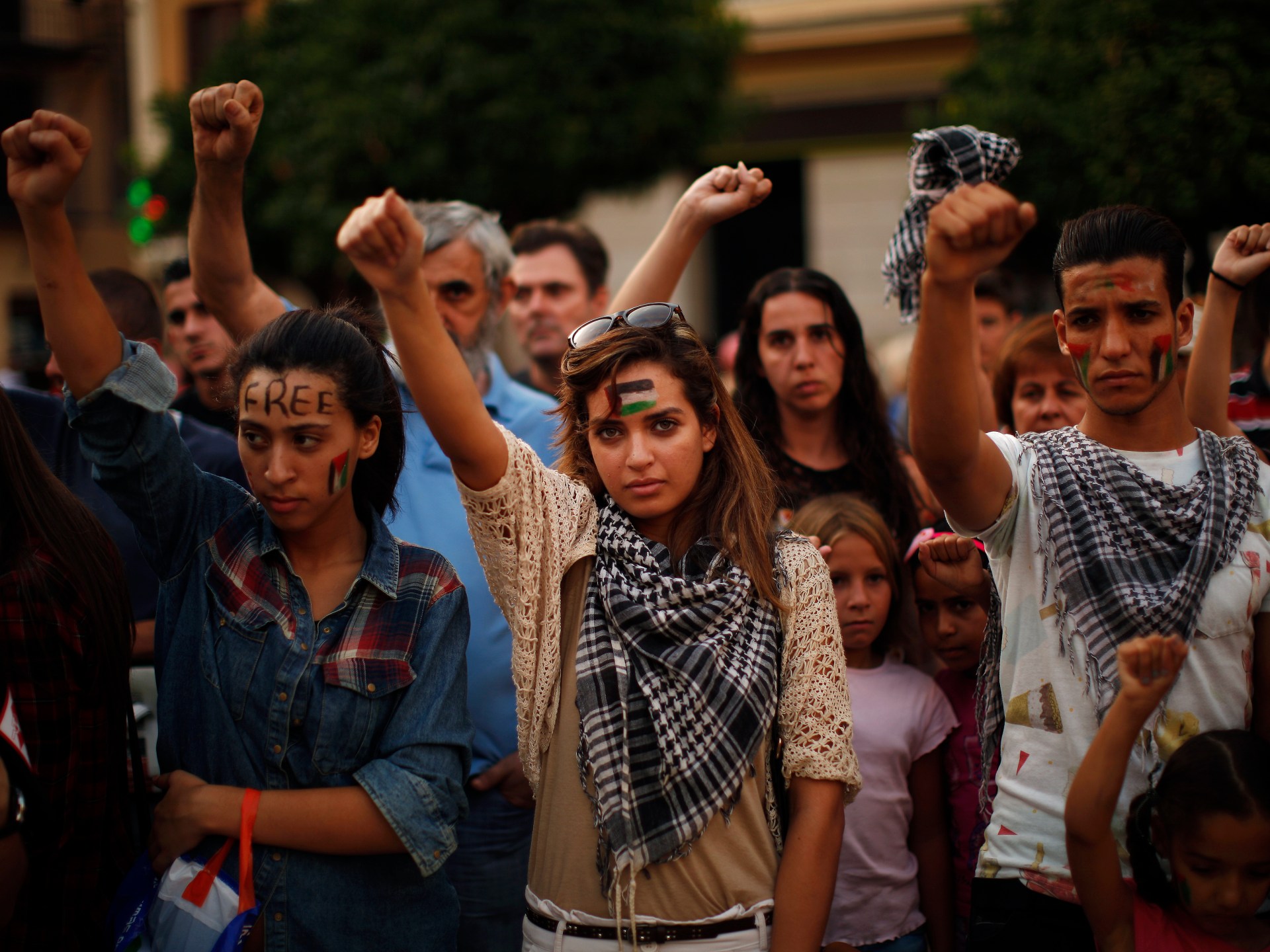Fighter Planes? Yes. Rubber Bullets? No — Global Issues
UNITED NATIONS, Mar 14 (IPS) – When the US was planning to sell fighter planes to a politically-repressive regime in South-east Asia in a bygone era, a spokesman for a human rights organization, responding to a question from a reporter, was quoted as saying there were no plans to oppose the proposed sale because “it is very difficult to link F-16 fighter planes to human rights abuses”
If fighter jets are fair game and cannot be used to violate human rights, the same cannot be said of “weapons of mass control” (WMCs), including water cannons, tear gas grenades, pepper spray and rubber bullets—used mostly against civilian demonstrators.
But these weapons, contrary to popular belief, are not just the sole monopolies of authoritative regimes in Asia, the Middle East and South and Central America but are also used by Western democracies such as the US, Spain and France – along with Chile, Colombia, Ecuador, Gaza, Guinea, Hong Kong, Iran, Iraq, Peru, Sudan, Tunisia and Venezuela.
A Reuters report published in October 2019 about the mass resistance in Hongkong said the protests erupted over planned legislation that would have allowed extraditions from Hong Kong to mainland China.
The police reportedly fired over 6,000 tear gas rounds, around 2,400 rubber bullets, some 700 sponge grenades and over 500 bean bag rounds.

The report, My Eye Exploded, published jointly with the Omega Research Foundation, is based on research in more than 30 countries over the last five years.
It documents “how thousands of protesters and bystanders have been maimed and dozens killed by the often reckless and disproportionate use of less lethal law enforcement weaponry, including kinetic impact projectiles (KIPs), such as rubber bullets, as well as the firing of rubberized buckshot, and tear gas grenades aimed and fired directly at demonstrators”..
“We believe that legally-binding global controls on the manufacture and trade in less lethal weapons, including KIPs, along with effective guidelines on the use of force are urgently needed to combat an escalating cycle of abuses,” said Patrick Wilcken, Amnesty International’s Researcher on Military, Security and Policing issues.
Amnesty International and the Omega Research Foundation are among 30 organizations calling for a UN-backed Torture-Free Trade Treaty to prohibit the manufacture and trade of inherently abusive KIPs and other law enforcement weapons, and to introduce human rights-based trade controls on the supply of other law enforcement equipment, including rubber and plastic bullets.
https://www.ipsnews.net/2023/02/ngos-campaign-torture-free-un-trade-treaty/
Dr Michael Crowley, Research Associate at the Omega Research Foundation, said a Torture-Free Trade Treaty would prohibit all production and trade in existing inherently abusive law enforcement weapons and equipment.”
These include intrinsically dangerous or inaccurate single KIPs, rubber-coated metal bullets, rubberized buckshot and ammunition with multiple projectiles that have resulted in blinding, other serious injuries and deaths across the world.”
The Amnesty report says these weapons have led to permanent disability in hundreds of cases and many deaths.
There has been an alarming increase in eye injuries, including eyeball ruptures, retinal detachments and the complete loss of sight, as well as bone and skull fractures, brain injuries, the rupture of internal organs and haemorrhaging, punctured hearts and lungs from broken ribs, damage to genitalia, and psychological trauma.
A recent report in the Sri Lanka Sunday Times said dissent in Sri Lanka is often met with tear gas and water cannon fired by the Sri Lanka Police. Mass demonstrations that culminated in a protest site, resulting from an economic and political crises last year, were often subdued with police tear gas and water cannon blasts.
Some protesters have died while some deaths were attributed to complications following tear gas attacks. Sri Lanka Police are now being accused of abusing the use of the riot control agent. Lawyers have also filed complaints with human rights authorities, the police, and courts.
Sri Lankans who have been exposed to tear gas allege they have suffered long-term coughs, phlegm, irritation of the throat, and in some cases, asthma. Between March and July 2022, the Police had fired more than 6,700 tear gas canisters.
Meanwhile, according to an evaluation by Chile’s National Institute for Human Rights, police actions during protests which began in October 2019 resulted in more than 440 eye injuries, with over 30 cases of eye loss, or ocular rupture.
At least 53 people died from projectiles fired by security forces, according to a peer-reviewed study based on medical literature between 1990 and June 2017. It also concluded that 300 of the 1,984 people injured suffered permanent disability. The actual numbers are likely to be far higher, according to the report.
Since then, the availability, variety and deployment of KIPs has escalated globally, furthering the militarization of protest policing.
The Amnesty report finds that national guidance on the use of KIPs rarely meets international standards on the use of force, which states that their deployment be limited to situations of last resort when violent individuals pose an imminent threat of harm to persons. Police forces routinely flout regulations with impunity.
In the United States, the report said, the use of rubber bullets to suppress peaceful protest has become increasingly commonplace.
One demonstrator hit in the face in Minneapolis, Minnesota on 31 May 2020 told Amnesty International: “My eye exploded from the impact of the rubber bullet and my nose moved from where it should be to below the other eye. The first night I was in the hospital they gathered up the pieces of my eye and sewed it back together. Then they moved my nose back to where it should be and reshaped it. They put in a prosthetic eye – so I can only see out of my right eye now.”
In Spain, the use of large, inherently inaccurate tennis-ball-sized rubber KIPs has led to at last one death from head trauma and 24 serious injuries, including 11 cases of severe eye injury, according to Stop Balas de Goma, a campaign group.
In France, a medical review of 21 patients with face and eye injuries caused by rubber bullets noted severe injuries including bone fragmentation, fractures and ruptures resulting in blindness.
IPS UN Bureau Report
Follow @IPSNewsUNBureau
Follow IPS News UN Bureau on Instagram
© Inter Press Service (2023) — All Rights ReservedOriginal source: Inter Press Service
Check out our Latest News and Follow us at Facebook
Original Source






